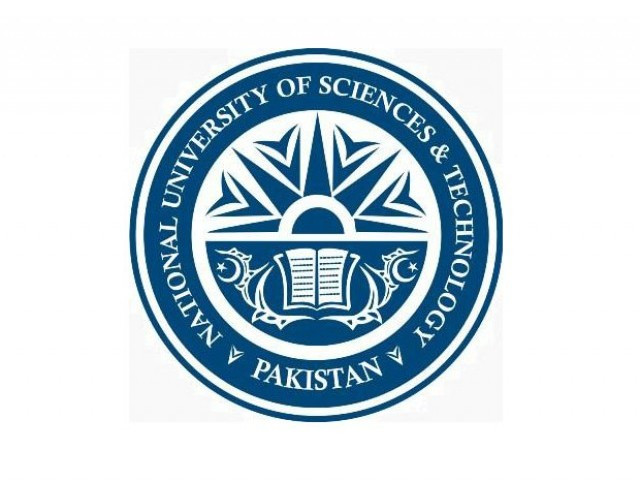“It was an overreaction.”
The match that struck the flame was an image of a student fine notice stuck to a bulletin board at the university. This image, detailing what the students were being fined for, went viral. I admit that the grammar used in the notice was less than satisfactory including the terms ‘wearing tight’, ‘no dopata’ and so forth; but this error has been unfairly used to defame Nust and the quality of its education and graduates on social media.
If you ask any Nust student, these fine notices are a common sight. The usual notices are posted for male students who have been caught smoking on the ‘smoke-free campus’ or students who have not been wearing their student ID cards – a requirement at the institute.
Coming to the dress code furore, many people are unaware that the Nust dress code is, and has always been a part of the institute’s prospectus. This code is quite detailed and requires students to be decently dressed at all times with restrictions on wearing sheer clothing, clothes with provocative art or wording, and a requirement for females to wear three-piece shalwar kameez, that is, clothes with a shirt, pants/shalwar and a dupatta.
Nust Business School takes the dress code a step further, requiring students to wear formal attire – boys in formal pants and collared shirts; girls in non-denim decent, formal clothing. The word ‘decent’ is intended to imply culturally accepted norms of clothing.
This dress code may be considered stringent by some, downright absurd by others, but there are also those who find it entirely appropriate. Every institute has a dress code and this code usually reflects both, the mentality of the administration, as well as the nature of professional education being imparted. Hence, one might encounter female architecture students often sporting short tops with skinny jeans or female engineering students covering their hair with a dupatta. As far as the official Nust policy is concerned, there is no requirement for women to cover their heads within the H-12 campus.
The question is, whether you agree with this dress code or not, does this in any way imply that Nust is not providing a high standard of academic education for its students?
No, it certainly does not.
The university sits on four square kilometres of land, is home to over 15 state-of-the-art academic buildings, a brand-new auditorium, and hostel accommodations that are impressive for the subsidised rate at which they are provided to students. In addition, there are custom-made laboratories in the engineering departments, fully equipped with modern machinery and tools. The NUST Business School (NBS) alone has five computer labs and several million rupees are spent annually on maintaining libraries across campuses.
For those who seem to think that Nust-ians are introverted, deprived and intellectually-challenged beings, I would like to inform them that students at Nust have the opportunity to get involved in a variety of extra-curricular activities such as the Nust Media Club, Entrepreneurs Club, Adventure Club, Dramatics and Debating Club, Literary Circle, Science Society and so forth.
As far as international exposure of Nust students is concerned, perhaps you did not know that Nust brought the first international model United Nations (NIMUN 2013) to Islamabad, and students at Nust hosted the South Asian Youth Conference, discussing ideas for regional stability with participants from all SAARC countries. More recently, Nust hosted the World Engineering Congress and every year, an MUN (Model United Nations) delegation is trained to compete internationally. Just last year, the delegation won in Bangkok. The INSPIRE (Science Society) and Discover (Business School) competitions held annually encourage students to prepare and present entrepreneurship projects for national recognition.
Then, there are the national achievements of Nust students. This year five Nust students were chosen for one of the nation’s most coveted student internship programmes at Procter & Gamble. Every year, recruiting teams from top organizations like Unilever, Coca Cola, ICI, Engro and Telenor visit Nust. While it is widely considered to be the best engineering university in the country, in recent years, NBS has also made advances in catching up to the Lahore University for Management Sciences (LUMS) for its repute in business management. Students from NBS compete annually in competitions held by Nestle, P&G, Reckitt Benkiser, and Unilever. Just last year, NBS students won the RB Lip Dub competition which was voted as the best Lip Dub entry from the country.
With all these achievements, why impose such ‘strict’ rules, you ask? Simply, because of the whims of the administration?
I am afraid it is not as simple or as absurd as many have made it seem.
Nust is home to the largest and most diverse student body in the country. With over 23 institutions, and well over 50,000 applicants annually, students at Nust hail from Pishin to interior Sindh, from the far-flung areas of KPK and Gilgit Baltistan, to the big cities. Hence, students come from a variety of backgrounds and some are extremely conservative and religious while others are westernized, have lived abroad, and hold liberal views.
These are people who would have otherwise never even met each other; might never have had a chance to understand each other. However, at Nust, they are given this opportunity and in this melting pot, students are thrown together with the hope that they will be able to learn from each other and about each other. The rules at Nust enable students to bypass these differences and prevent friction, which can in turn, offend one party or another.
Perhaps, these rules can be improved, but it is important to understand that they are not meant to be oppressive. They are not intended to enforce one way of thinking over another. The ultimate aim is to help remove social, religious, philosophical and mental barriers and thus seek peaceful co-existence.
[poll id="290"]



COMMENTS
Comments are moderated and generally will be posted if they are on-topic and not abusive.
For more information, please see our Comments FAQ